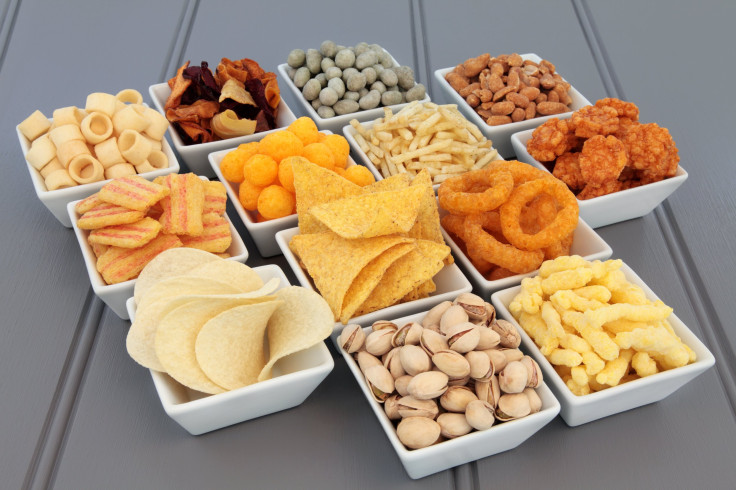America Loves Junk Food: 61% Of Our Calories Are From Highly Processed Snacks

Even though America’s fast food chains and grocery stores have been trying to turn a new leaf to observe the fight against obesity, a new study suggests that most of us still get the majority of our calories from highly processed foods pumped with salt, sugar, and fat.
Up to 61 percent of the food Americans buy is highly processed, the researchers found. They also estimated that 1,000 calories a day of a person’s diet come from highly processed foods.
But before we gawk at that number, let’s define what it means to be a processed food. According to the National Health Service (NHS), processed foods are any type of food that has been altered from its natural state for safety or convenience. Processed foods include breakfast cereals, cheese, canned vegetables, and even milk and bread — some of the staples of our daily diet. And yes, processed foods also include the unhealthier things, like microwave meals, chips, bacon, and sodas.
“It’s important for us to recognize that a processed food is not just Coca-Cola and Twinkies — it’s a wide array of products,” Jennifer Poti, research assistant professor at the University of North Carolina at Chapel Hill and an author of the study, told Time.
The thing that almost all processed foods have in common, however, is that they’re pumped with sugar and salt to help preserve their flavor and shelf life. Since most foods found in your average grocery store — aside from fresh fruit and vegetables — are technically processed, it’s likely you’re eating way more of these things than you're aware.
In the study, the researchers examined some 157,000 shoppers whose food purchases were tracked from 2000-2012. They used software that identified words in the nutrition and ingredient labels, then sorted the products into four different categories: minimally processed (bagged salad, frozen meat), basic processed (oil, flour, sugar), moderately processed (products still recognizable as their original plant or animal), and highly processed (food mixtures that weren’t recognizable as their original source, like Twinkies).
The researchers found that American consumers mostly purchased the last two types of food. While 61 percent of purchases went to highly processed foods, 15.9 percent went to moderately processed foods; and Americans were more likely to buy ready-to-eat (68.1 percent) and ready-to-heat (15.2 percent) products.
But the researchers aren’t telling people to stop eating processed foods; that can’t really be avoided. Instead, be careful to read the nutrition labels and stay away from processed foods high in fat, sugar, or sodium. Products that are high in fat will generally have over 17.5g of fat per 100g; those high in sugar will have about 22.5g of sugar per 100g; and those high in salt have over 1.5g of salt per 100g (or 0.6g of sodium).
Source: Poti J, Mendez M, Ng S, Popkin B. Is the degree of food processing and convenience linked with the nutritional quality of foods purchased by US households? American Society for Nutrition, 2015.



























